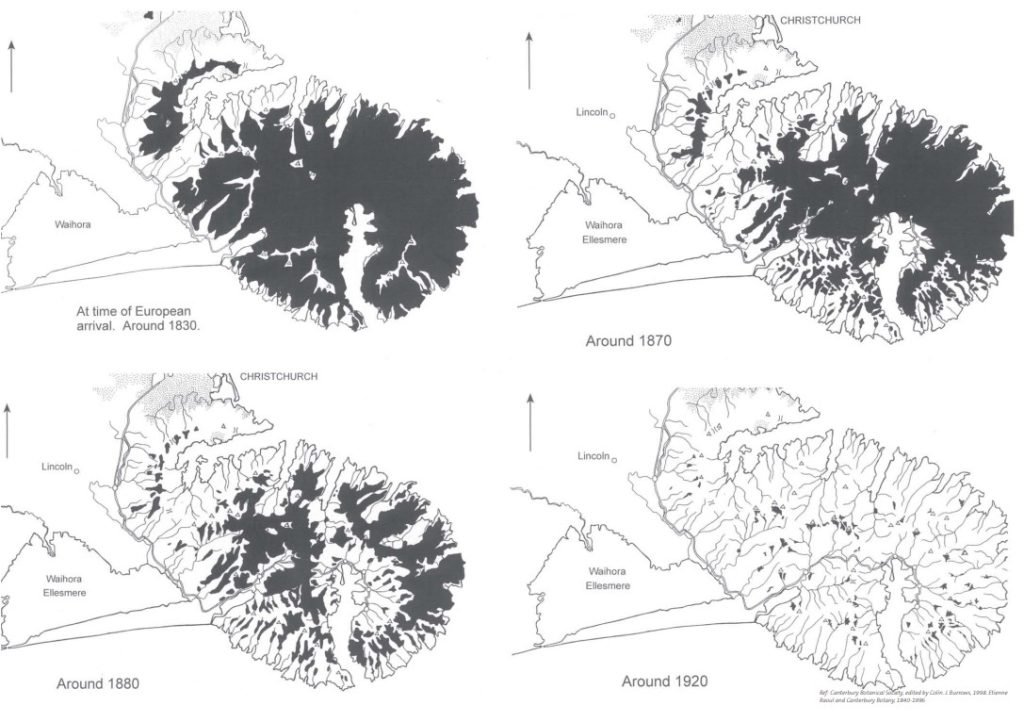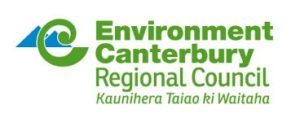5.5 Tāne Mahuta
Wāhi Tuarima | Part 5
Ngā Take ā-rohe Me Ngā Kaupapa | Regional Issues and Policy
5.5 Tāne [TM]
Tāne Mahuta is the atua of the forests and birds, and the son of Ranginui and Papatūānuku. It is Tāne that broke the tight embrace of his parents, forcing Rangi high into the heavens and leaving Papatūānuku on earth to care for their children.
This section addresses issues of significance pertaining to indigenous biodiversity and mahinga kai; the flora and fauna that make up the domain of Tāne. General issues and policy in this section sit alongside local issues described in Part 6 of this IMP.
This section addresses issues of significance pertaining to indigenous biodiversity and mahinga kai; the flora and fauna that make up the domain of Tāne. General issues and policy in this section sit alongside local issues described in Part 6 of this IMP.
Ngāi Tahu has a particular interest in indigenous biodiversity, both for its inherent value on the landscape and the ecosystem services it provides, and with regard to mahinga kai. Indigenous flora and fauna has sustained tāngata whenua for hundreds of years, providing food, fibre, building materials, fuel, medicine and other necessities. The relationship between tāngata whenua and indigenous biodiversity has evolved over centuries of close interaction and is an important part of Ngāi Tahu culture and identity.
The protection and enhancement of indigenous biodiversity and mahinga kai underpins many of the issues and policies in this IMP.
"For me, the protection and enhancement of mahinga kai and the ability to continue practices that we have used for hundreds of years is the most important issue that this IMP needs to address."
Rei Simon, Wairewa Rūnanga
Native forest cover change - Te Pātak o Rākaihautū | Source: Banks Peninsula Landscape Study. 2007 (Boffa Miskell).

Ngā Paetae | Objectives
(1) Regional policy, planning and decision making in the takiwā reflects the particular interest of Ngāi Tahu in indigenous biodiversity protection, and the importance of mahinga kai to Ngāi Tahu culture and traditions.
(2) The customary right of Ngāi Tahu to engage in mahinga kai activity is recognised, protected and enhanced, as guaranteed by Article 2 of Te Tiriti o Waitangi, and the NTCSA 1998.
(3) The presence of indigenous biodiversity on the Canterbury landscape is enhanced, both in rural and urban environments.
(4) The taonga value of indigenous ecosystems as natural capital and provider of essential ecosystem services is increasingly valued in the community.
(5) Customary use, and therefore mahinga kai, is given effect to as a first order priority for freshwater management in the takiwā.
(6) Traditional and contemporary mahinga kai sites and species are protected and restored.
(7) Existing areas of indigenous vegetation are protected, and degraded areas are restored.
(8) The establishment and spread of invasive pest and weed species is progressively and effectively controlled.
(9) The protection and enhancement of indigenous biodiversity and mahinga kai occurs through a shared, coordinated effort between tāngata whenua, local authorities, conservation groups and communities.
Ngā Take | Issues of Significance
- TM1: Mahinga kai
- TM2: Indigenous biodiversity
- TM3: Restoration of indigenous biodiversity
- TM4: Weed and pest control
- TM5: Use of 1080
- TM6: Flora and fauna
TM1: Mahinga Kai
Issue TM1: Loss of mahinga kai areas and opportunities in the takiwā as a result of:
(a) Drainage of wetlands, lagoons and waipuna;
(b) Widespread loss of indigenous ecosystems, habitats and species;
(c) Poor water quality and quantity;
(d) Diversion and abstraction of flow from waterways, and dewatering of customary fishing sites;
(e) Loss of or poor access to traditional mahinga kai areas;
(f) Loss of physical connections between waterways and waterbodies;
(g) Acclimatisation (adverse effects on native species as a result of introduced species); and
(h) Infrastructure barriers to fish passage.
Ngā Kaupapa / Policy
TM1.1 Ngāi Tahu whānui, both current and future generations, must be able to access, use and protect mahinga kai resources, as guaranteed by Te Tiriti o Waitangi.
TM1.2 To advocate that the protection and restoration of traditional and contemporary mahinga kai sites and species is recognised and provided for as a matter of national importance under the RMA 1991.
TM1.3 TM1.3 To progressively enhance and restore mahinga kai resources and sites and the customary use traditions associated with such resources, by:
(a) Integrating mahinga kai objectives and policy into regional planning and conservation management documents;
(b) Continuing to develop Ngāi Tahu led restoration projects;
(c) Creating Mahinga Kai Cultural Parks (see Box - Mahinga Kai Cultural Parks);
(d) Organising wānanga, to teach our tamariki about our mahinga kai traditions; and
(e) Investigating mahinga kai opportunities for existing protected areas, proposed restoration projects and open place/reserve settings.
Ki Uta Ki Tai
TM1.4 To promote the principle of Ki Uta Ki Tai as a culturally appropriate approach to mahinga kai enhancement, restoration and management, in particular:
(a) Management of whole ecosystems and landscapes, in addition to single species; and
(b) The establishment, protection and enhancement of biodiversity corridors to connect species and habitats.
Freshwater management
TM1.5 To require that freshwater management recognises and provides for mahinga kai, by:
(a) Customary use as a first order priority;
(b) Restoring mahinga kai values that were historically associated with waterways, rather than seeking to maintain the existing (degraded) mahinga kai value of a waterway; and
(c) Protecting indigenous fish recruitment and escapement by ensuring that waterways flow Ki Uta Ki Tai and there is sufficient flow to maintain an open river mouth.
Mahinga kai habitat
TM1.6 To continue to advocate for the protection of indigenous fish species over and above the protection of habitat for salmon and trout. The protection of significant habitats of indigenous fauna is a matter of national importance (RMA s.6).
Remnant areas
TM1.7 To require that district and regional plans include policy and rules to protect, enhance and extend existing remnant wetlands, waipuna, riparian margins and native forest remnants in the takiwā given the importance of these ecosystems as mahinga kai habitat.
TM1.8 To require that landowners and commercial land users protect remnant areas of indigenous biodiversity.
He Kupu Whakamāhukihuki / Explanation
Mahinga kai is the customary gathering of food and natural materials and the places where those resources are gathered (Section 167 of the NTCSA 1998). Customary use is the ongoing access to, and sustainable use of mahinga kai resources.
The ability of Ngāi Tahu whānui, current and future generations, to access, use and protect mahinga kai resources, and the history and traditions that are associated with those resources, is an issue of immense significance to tāngata whenua in Canterbury. Following European settlement, the drainage of swamps and wetlands, the felling of bush, the conversion of land to agricultural use, and the introduction of acclimatised species had a devastating effect on mahinga kai resources and sites, and the physical loss of land and access to mahinga kai sites had an equally devastating effect on the ability of tāngata whenua to provide for their own sustenance.
The loss of mahinga kai was the basis for the majority of grievances in the Canterbury region during Te Kereme (the Ngāi Tahu Claim):
"The majority of grievances arising in the Canterbury region relate to the loss of the tribe’s mahinga kai. It is a loss that cannot be easily documented; the effects of drainage and pollution do not occur overnight. Yet in 1988, when these complaints were expressed to the Tribunal, the devastation of Ngāi Tahu’s highly prized taonga was readily apparent to all. The evidence lies in the dried-up lagoons, the poisoned lakes and rivers, the used-up fisheries. Members of Ngāi Tahu can no longer practice a way of life that they used to practice even 20 years ago. Much of the damage, as the history behind the grievances will relate, occurred many years ago. In almost every instance the interests of settlement were placed firmly above those of Ngāi Tahu." (1)
Mahinga kai continues to be a cornerstone of Ngāi Tahu cultural well being. Participating in mahinga kai traditions is an important expression of cultural identity, and a means of passing values and knowledge on to current and future generations (see Box - Sustaining mahinga kai traditions). The Ngāi Tahu commitment to mahinga kai and customary use implies sustainable use and the need to manage, protect and restore species, habitats and ecosystems to enable such use to occur. Increased abundance of, access to, and use of mahinga kai is a key outcome identified in Ngāi Tahu 2025, as is the need to restore waterways to the point where they support healthy populations of mahinga kai species. Mahinga kai is an important kaupapa in all of the catchment based sections in Part 6 of this IMP.
Sustaining Mahinga Kai Traditions
Ngāi Tahu has begun a cultural renaissance to recognise and replenish its traditions, culture and relationships. It is vital to the future of Ngāi Tahu to ensure that sufficient natural resources continue to be available to provide places and experiences for young Ngāi Tahu to practice the activities of their tūpuna, learn the skills used to manage the environment, know their cultural values, and take pride in the knowledge that their elders have retained to pass along to them.
Source: Statement of Evidence of Te Marino Lenihan; for an application for a WCO on the Hurunui River and Lake Sumner (Hoka Kura) by the NZ and North Canterbury Fish and Game Councils and the NZ Recreational Canoeing Association.
Mahinga Kai Cultural Park
Mahinga Kai Cultural Park is a concept identified in Ngāi Tahu 2025 to describe a land or marine based natural area managed and/or owned by Ngāi Tahu for the purposes of mahinga kai.
Mahinga Kai Cultural Parks:
- Provide a framework for protecting, enhancing and managing culturally significant sites in the contemporary world in line with our values;
- Are a way of guaranteeing access to mahinga kai as well as protecting, enhancing and managing mahinga kai for the benefit of this and future generations – mō tātou, ā, mō kā uri ā muri ake nei;
- Can provide us with a way to continue the work begun by our tupuna to provide for the ongoing protection and use of our mahinga kai;
- Build on the tools developed under our Settlement to further restore rangatiratanga and mana over mahinga kai species and sites;
- Can assist in developing tools for the management of major land based mahinga kai that are otherwise currently out of reach;
- Provide opportunities for Ngāi Tahu Whānui to advocate for the continued protection of our mahinga kai while balancing this with the principles of sustainable use and sustainable management, offering an important and sound alternative to current conservation (or preservation) practices; and
- Can help us address major environmental issues facing mahinga kai through hands-on management that encourages our people to reconnect with their landscape & potentially provide income & employment.
Source: Te Rūnanga o Ngāi Tahu.
Cross reference:
» Issue TM2: Indigenous Biodiversity
» General policies on water quality and quantity (Section 5.3 Issues WM6 and WM8)
» Mahinga kai issues in the catchment sections of Part 6
TM2: Indigenous Biodiversity
Issue TM2: The widespread loss of indigenous biodiversity has significant effects on:
(a) The relationship of Ngāi Tahu and their culture and traditions with ancestral lands, water and sites;
(b) Mahinga kai values (see Issue TM1); and
(c) The health of land, water and communities.
Ngā Kaupapa / Policy
Ngāi Tahu interests in biodiversity
TM2.1 To require that local authorities and central government actively recognise and provide for the relationship of Ngāi Tahu with indigenous biodiversity and ecosystems, and interests in biodiversity protection, management and restoration, including but not limited to:
(a) Importance of indigenous biodiversity to tāngata whenua, particularly with regard to mahinga kai, taonga species, customary use and valuable ecosystem services;
(b) Recognition that special features of indigenous biodiversity (specific areas or species) have significant cultural heritage value for Ngāi Tahu;
(c) Connection between the protection and restoration of indigenous biodiversity and cultural well-being;
(d) Role of mātauranga Ngāi Tahu in biodiversity management; and
(e) Role of Ngāi Tahu led projects to restoring indigenous biodiversity (e.g. Mahinga Kai Enhancement Fund; Kaupapa Kēreru).
TM2.2 To recognise Te Tiriti o Waitangi as the basis for the relationship between central and local government and tāngata whenua with regard to managing indigenous biodiversity, as per the duty of active protection of Māori interests and the principle of partnership.
TM2.3To continue to work in partnership with the Department of Conservation, local authorities and the community to protect, enhance and restore indigenous biodiversity.
Significance
TM2.4 To require that criteria for assessing the significance of ecosystems and areas of indigenous biodiversity recognise and provide for ecosystems, species and areas that are significant for cultural reasons.
Protection of remnant and restored areas
TM2.5 To require that city, district and regional plans include specific policy and rules to protect, enhance and extend existing remnant and restored areas of indigenous biodiversity in the takiwā.
TM2.6 To showcase existing remnant and restored areas as examples of how future management can improve the cultural health of the takiwā.
TM2.7 To continue to support those groups and landowners that that are working to maintain, restore and enhance the indigenous biodiversity, and to advocate for projects of interest and importance to Ngāi Tahu.
Integrating indigenous biodiversity into the landscape
TM2.8 To require the integration of robust biodiversity objectives in urban, rural land use and planning, including but not limited to:
(a) Indigenous species in shelter belts on farms;
(b) Use of indigenous plantings as buffers around activities such as silage pits, effluent ponds, oxidation ponds, and industrial sites;
(c) Use of indigenous species as street trees in residential developments, and in parks and reserves and other open space; and
(d) Establishment of planted indigenous riparian margins along waterways.
Biodiversity corridors
TM2.9 To advocate for the establishment of biodiversity corridors in the region, Ki Uta Ki Tai, as means of connecting areas and sites of high indigenous biodiversity value.
Ecosystem services
TM2.10 To require that indigenous biodiversity is recognised and provided for as the natural capital of Papatūānuku, providing essential and invaluable ecosystem services.
TM2.11 To work with the wider community to increase community understandings of indigenous biodiversity and the ecosystem services it provides.
He Kupu Whakamāhukihuki / Explanation
Indigenous biodiversity, and the landscapes and ecosystems that support it, is a fundamental part of the culture, identity and heritage of Ngāi Tahu, particularly with regard to mahinga kai and the connection between people and place through resource use (see Issue TM1).
Ngā Pākihi Whakatekateka o Waitaha and Te Pātaka o Rākaihautū have experienced significant land use change and resultant habitat and biodiversity loss over the last century and a half (see Box - Native forest cover change - Te Pātaka o Rākaihautū), and this has had a marked effect on Ngāi Tahu mahinga kai values. The degradation and loss of indigenous species and diversity is one of the major factors affecting the poor cultural health of many sites and waterways. For example, a cultural health assessment for Ihutai and its catchment found that 70% of all sites surveyed had less than 15% of the total vegetation cover in native vegetation, and no site had greater than 40% native vegetation dominance (see Part 6, Section 6.5 Ihutai).
Restoring indigenous biodiversity values is one of the most important challenges for the future management in the takiwā. A healthy economy relies on a healthy environment. Indigenous biodiversity, along with air, water and soil, are taonga; they are the region’s natural capital, providing a suite of essential ecosystem services (see Box - Ecosystem services). Although these services are often taken for granted, they have immense value to cultural, social and economic well being. A major concern for tāngata whenua is that urban and township planning continues to promote, and often prioritise, the planting of exotic species in residential land developments, along waterways and in reserves and open space.
The Treaty of Waitangi provides the basis for the relationship between central and local government and iwi/hapū in managing indigenous biodiversity, as per the duty of active protection of Māori interests and the principle of partnership. The Christchurch City Council Biodiversity Strategy 2008-2035 (for Ōtautahi and Te Pātaka o Rākaihautū) reflects these obligations, through the provision a vision, goals and objectives for the protection and enhancement of indigenous biodiversity in the region that explicitly recognise the relationship of Ngāi Tahu to biodiversity and the need for a partnership approach to achieve biodiversity outcomes.
Ecosystem Services
Indigenous biodiversity provides a variety of often unrecognised ecosystem services. These services, which can be provided directly or indirectly, include:
- Regulation of atmospheric carbon levels and temperature, including sequestration of atmospheric carbon by
growing forests; - The retention of soil by catchment vegetation, thereby reducing erosion and downstream sedimentation;
- Catchment vegetation and wetland moderation of run-off peaks (potentially flooding) and the provision of more consistent water flows in dry conditions;
- Wetland sediment trapping;
- Nutrient filtering by riparian and wetland vegetation to improve downstream water quality; and
- Waste decomposition and nutrient recycling.
Source: Planning for indigenous biodiversity. Quality planning: the RMA resource. Ministry for the Environment
Cross reference:
» Issue TM1: Mahinga kai
» Issue TM3: Restoration of indigenous biodiversity
» General policy on wetlands, waipuna and riparianmargins (Section 5.3, Issue WM13)
TM3: Restoration of Indigenous Biodiversity
Issue TM3: Tāngata whenua have a particular interest in the restoration of indigenous biodiversity.
Ngā Kaupapa / Policy
Ngāi Tahu interests in biodiversity
TM3.1 To approach the restoration of indigenous biodiversity in the takiwā based on the following principles:
(a) Restoration of indigenous biodiversity is about restoring original and natural landscapes, and therefore the mauri of the land; and
(b) Restoration of indigenous biodiversity is about restoring the relationship of Ngāi Tahu to important places and resources; including planning for customary use.
TM3.2 To advocate for an approach to restoration based on ‘working with the land rather than against it’, including but not limited to:
(a) Establishment of long term, intergenerational vision and objectives (50 and 100 years ahead); and
(b) Use of natural succession and staged re-planting rather than spraying and burning (e.g. natural succession of indigenous species into areas of gorse and broom; staged underplanting of natives into wetland and lagoon areas full of willow).
TM3.3 To promote the value of Ngāi Tahu knowledge, tools and tikanga in restoration planning and projects, in particular:
(a) The establishment of long term, achievable restoration goals (tāngata whenua are not going anywhere!);
(b) Provision of information on the flora and fauna present in pre-European times, based on oral tradition and historical maps; and
(c) Use of tools such as State of the Takiwā to provide assessments of current and desired states of cultural health of an area and cultural assessments of restoration requirements and risks.
TM3.4 To incorporate, where appropriate, mahinga kai objectives into restoration project planning and objectives
TM3.5 To require that seeds and plants for restoration projects are appropriate to the area, and as much as possible locally sourced.
TM3.6 TM3.6 To support local and regional restoration groups and efforts, including but not limited to:
(a) Living Streams (community based stream enhancement, Environment Canterbury); and
(b) Te Ara Kākāriki Greenway Canterbury (development of an indigenous wildlife corridor across the Ngā Pākihi Whakatekateka o Waitaha).
He Kupu Whakamāhukihuki / Explanation
The restoration of indigenous biodiversity is critical to achieving Ngāi Tahu objectives to increase the abundance, access to and use of mahinga kai. The importance of indigenous biodiversity to mahinga kai is reflected in tāngata whenua perspectives on restoration: that restoration is about restoring the mauri of land and places, and about restoring the relationship of Ngāi Tahu to these places.
Ngāi Tahu have a unique and tested set of tools, practices and knowledge that can provide a valuable basis for restoration projects. Oral tradition and tribal and historical records provide a reliable and accurate source of information to construct a picture of the pre-European settlement landscape and the species that existed in this landscape (e.g. 1880 Taiaroa Maps held by Ngāi Tahu). Tools such as State of the Takiwā provide contemporary assessments of current and desired states of cultural health of an area and can assist with developing restoration goals and objectives.
END NOTES / REFERENCES
- Waitangi Tribunal, 1995. Ngāi Tahu Ancillary Claims Report, Chapter 2 (Canterbury Ancillary Claims).
This website uses cookies to improve your experience. We'll assume you're ok with this, but you can opt-out if you wish. Cookie settingsAccept
Privacy & Cookies Policy
Privacy Overview
This website uses cookies to improve your experience while you navigate through the website. Out of these cookies, the cookies that are categorized as necessary are stored on your browser as they are essential for the working of basic functionalities of the website. We also use third-party cookies that help us analyze and understand how you use this website. These cookies will be stored in your browser only with your consent. You also have the option to opt-out of these cookies. But opting out of some of these cookies may have an effect on your browsing experience.
Necessary cookies are absolutely essential for the website to function properly. This category only includes cookies that ensures basic functionalities and security features of the website. These cookies do not store any personal information.
Any cookies that may not be particularly necessary for the website to function and is used specifically to collect user personal data via analytics, ads, other embedded contents are termed as non-necessary cookies. It is mandatory to procure user consent prior to running these cookies on your website.








